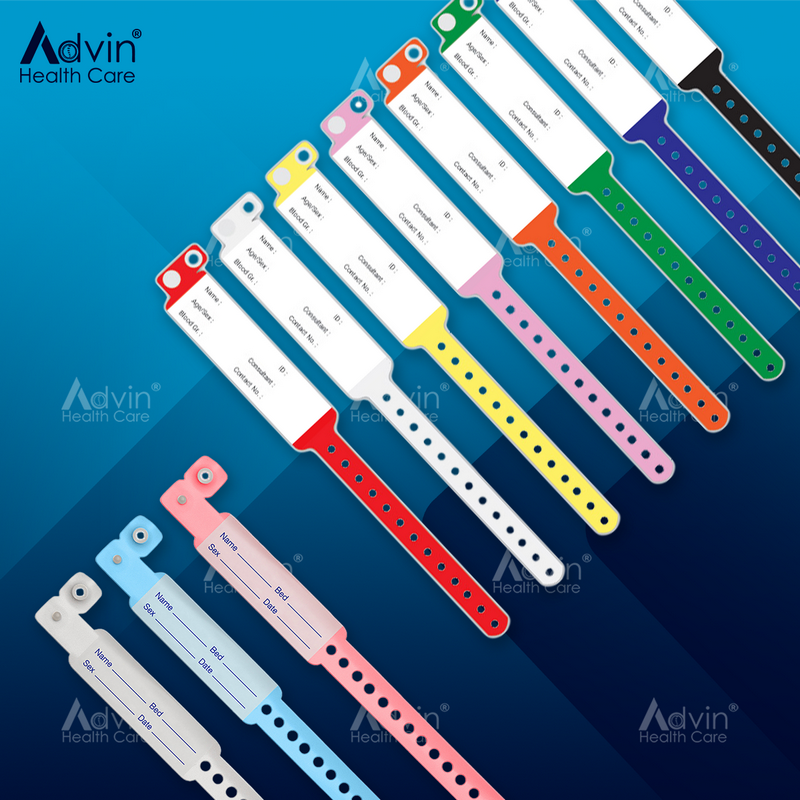Discovering the Different Kinds Of Patient Identification Band Made Use Of in Clinical Facilities
In the intricate world of healthcare, the crucial role of Patient Identification bands commonly goes undetected. These bands, differing from basic paper wristbands to advanced RFID bands, create the foundation of Patient safety and security protocols, guaranteeing accuracy in Patient Identification. Yet, the substantial variety of these bands, each with its distinct advantages and limitations, is usually ignored. As we navigate through this subject, one might obtain understanding into the subtle intricacies and essential importance of such bands in medical centers.
Understanding the Relevance of Patient Identification Bands
While they may appear like plain accessories, Patient Identification bands play an essential duty in medical centers. These bands serve as a critical tool for verifying Patient identity, avoiding clinical mistakes associated to misidentification. Patient Identification bands likewise help in enhancing administrative jobs, making certain exact record-keeping and payment.
Traditional Paper Wristbands: Their Usage and Limitations
Typical paper wristbands have been a staple in Patient Identification across various clinical centers. While their usage prevails, they harbor specific restrictions that might impact their efficiency in Patient monitoring. This area will certainly concentrate on the range of their application and the integral disadvantages connected with their use.
Paper Wristbands: Usage Extent
In the realm of Patient Identification, paper wristbands have long held a critical duty. These bands are commonly utilized in outpatient settings, where the Patient's remain is momentary. The wristbands contain important details such as the Patient's name, day of birth, and a special Identification number. This basic, yet reliable system, permits doctor to quickly and accurately recognize clients, guaranteeing the correct treatment is provided. Paper wristbands are also utilized in emergency situation circumstances, where quick Identification is paramount. Their use prolongs to events like blood contribution drives and mass inoculation programs, further stressing their convenience. In spite of improvements in technology, the simple paper wristband stays a dependable and affordable remedy for Patient Identification in numerous medical care scenarios.
Limitations of Paper Wristbands
Regardless of their extensive use, paper wristbands are not without their drawbacks. In addition, paper wristbands typically do not have the technological capabilities of more contemporary choices, such as barcoding or RFID chips, limiting their functionality to merely showing written info. Paper wristbands can trigger discomfort or skin irritability to some patients, especially when used for extensive periods.
Barcoded Wristbands: Developments in Patient Identification
While Patient Identification has long been a crucial element of healthcare, the introduction of barcoded wristbands symbolizes a substantial leap ahead. These bands take advantage of the simplicity of barcoding innovation, permitting for Patient details to be swiftly checked and accessed. They boost the rate and accuracy of Patient Identification, decreasing the threat of medical errors associated to misidentification.
Superhigh Frequency Identification (RFID) Bands: a Step Towards Futuristic Medical Care
The evolution of Patient Identification bands has caused the emergence of Superhigh frequency Identification (RFID) Bands (patient identification band). These ingenious devices present discover this crucial benefits for healthcare centers, using a more effective and highly advanced methods of Patient Identification. The execution of RFID in healthcare is a significant step in the direction of an extra advanced technique to Patient management and safety
Recognizing RFID Bands

RFID Bands: Secret Benefits
Mainly, these bands enhance Patient safety and security by supplying accurate, instantaneous Identification, consequently minimizing medical mistakes. RFID bands can store a huge amount of Patient data, More Info consisting of medical history and allergies, allowing customized treatment. On the whole, RFID bands represent a substantial advancement in Patient Identification innovation, profiting both patients and health care service providers.
Carrying Out RFID in Medical Care
These bands give a seamless means to track and recognize patients, ensuring their safety and boosting efficiency in treatment procedures. RFID bands lower clinical errors by giving exact Patient Identification, which is crucial in preventing misdiagnosis or incorrect medicine administration. Therefore, the application of RFID bands is a significant step in the direction of boosting Patient safety and security and medical care shipment.

Color-Coded Wristbands: Aiding in Quick and Accurate Diagnosis
In the busy setting of a clinical center, dig this color-coded wristbands have become important devices for swift and precise Identification of a patient's medical condition. These wristbands, worn by individuals, lug details shades that match to various medical conditions or standings. Red can suggest allergy risks, while yellow may indicate a fall danger. This system is designed to offer immediate aesthetic signs to healthcare suppliers, boosting Patient security and care top quality. In emergency circumstances, making use of these wristbands permits quick decision-making. The effectiveness of color-coded wristbands depends on the uniformity of color interpretation across health care establishments, requiring usual criteria for regular application.
Techniques for Reliable Execution and Monitoring of Patient ID Bands
Attaining optimal usage of Patient Identification bands requires a well-structured method for their application and administration. Patient education is also crucial; people should recognize the function of the bands and the need for their continuous wear. It's vital to have a backup plan in area, such as barcode scanning or biometrics, to make sure that Patient Identification is never endangered.
Verdict
Patient Identification bands are crucial in clinical facilities to guarantee security and accuracy. Reliable execution and management of these bands can dramatically reduce clinical errors, boost performance, and boost total Patient treatment.
These bands, varying from straightforward paper wristbands to innovative RFID bands, create the foundation of Patient security methods, making sure accuracy in Patient Identification.The development of Patient Identification bands has actually brought concerning the emergence of Radio Frequency Identification (RFID) Bands. Generally, RFID bands stand for a considerable innovation in Patient Identification technology, profiting both patients and medical care companies.
RFID bands decrease clinical mistakes by giving precise Patient Identification, which is critical in protecting against misdiagnosis or wrong medication management. Patient education is additionally critical; patients need to recognize the purpose of the bands and the demand for their consistent wear.